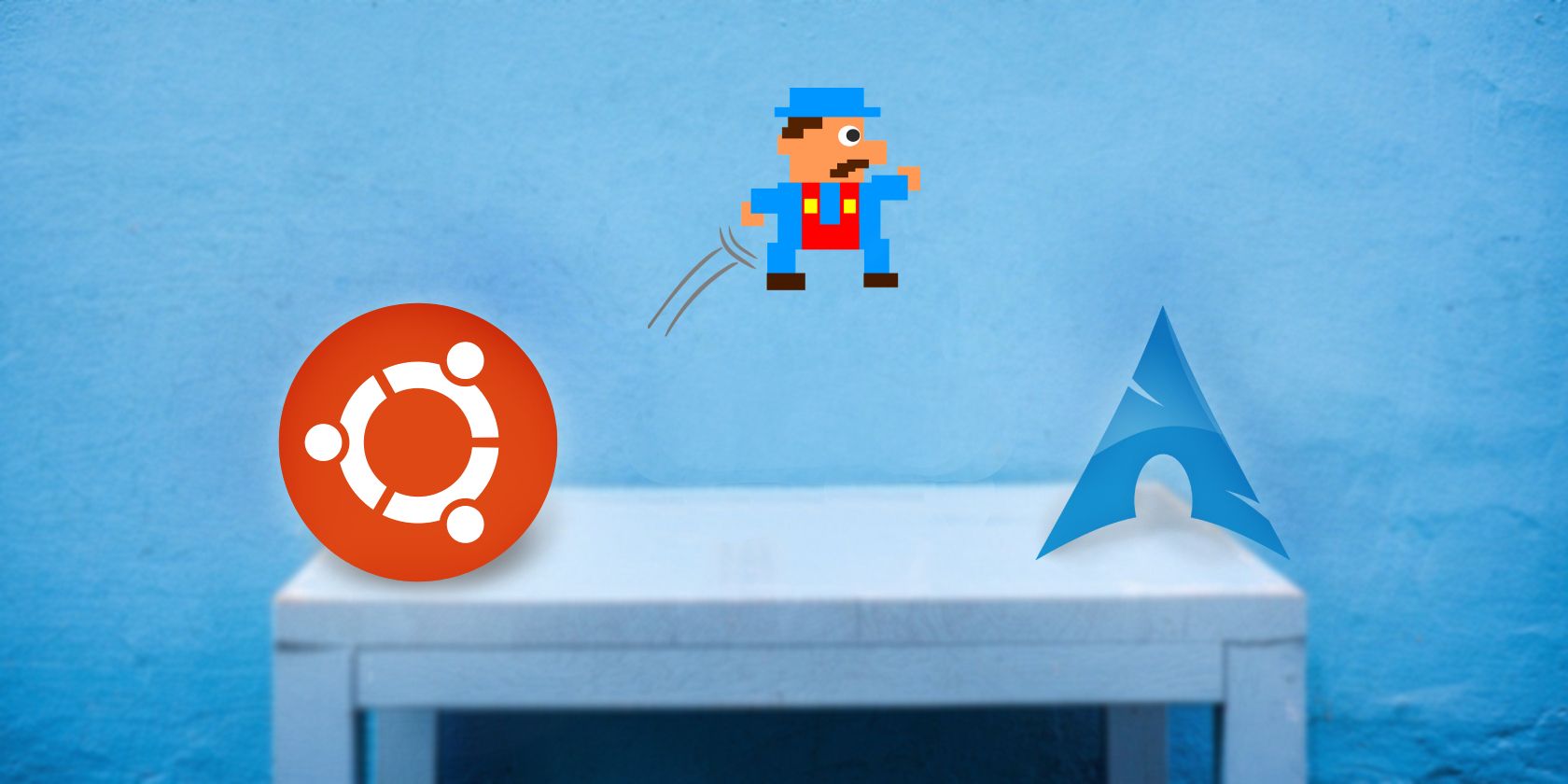Do you ever find yourself stuck in the never-ending loop of switching between multiple Linux distros for months? Maybe you want to explore all the available options in search of the best, but with so many distros to try, that seems like an impossible task.
Although as fun it is to install and test new operating systems, settling with a feature-rich Linux distro that fits your needs is far better than going on a wild goose chase.
Let's dive deep into distro-hopping, and learn how to put an end to it by finding a perfect Linux distro for yourself.
What Is Distro-Hopping?
Distro-hopping is the activity in which Linux users frequently switch between multiple distros, mostly in the pursuit of finding the best distro for themselves. But distro-hopping can also be a hobby for users who like to try out different systems, test their features, and explore the near-infinite world of Linux OSes.
The primary reason behind distro-hopping is the countless number of distros available on the internet, for free. Although the kernel behind these OSes is the same (Linux), each distro is a bit different than the other in some aspects. You can find Linux distros for developers, music producers, artists, and more.
Simply put, Linux distros are like candies in a jar, you don't know which one tastes the best until you try them all out.
How to Stop Distro-Hopping
Although distro-hopping isn't a bad practice and doesn't hurt anyone, it can quickly become a routine if not taken care of. You can easily spend months and years installing the latest distros on your computer and still end up nowhere.
That's why it is important to choose an ideal Linux distro for yourself, one you can fall back to when you want stability and comfort.
1. Introspect Why You’re Switching Distros
The number one tip that will help you settle down with a Linux distro is thinking deeply about why you distro-hop in the first place. Maybe you want a stable system that doesn't give up on you when you need it the most. Or maybe you're looking for a distro that follows a rolling-release distribution model so you always get the latest updates.
Even minor reasons to switch distros are acceptable. Maybe you don't like the appearance of a particular distro, or the name doesn't jazz you up, that's totally fine. But don't get stuck giving attention to minute details that you can compromise with. Also think about the major issues that you have with the distros you install, such as the package manager, technical complexity, poor documentation, etc.
Introspecting can sometimes help you in narrowing down your choices. For example, if you want your desktop to be minimal, you can try out Arch Linux. But Arch is not for the faint of heart and you'll have problems installing and setting it up if you are a beginner.
Even then if you want an Arch-based distro, you can go for Manjaro Linux, which is a user-friendly operating system.
2. Listing Down Your Needs and Preferences
Making a list of your expectations from an "ideal" operating system will help you in getting closer to your end goal, i.e. finding the best Linux distro for yourself. You can also list down the problems you experienced with distros you've already tried.
Here are some entries that you can add to your list:
- Lack of applications
- Don't like the default package manager
- Too technical for me OR need an easy-to-use system
- The desktop environment is not comfortable
- Want a minimal system with no bloatware
- Need a Windows-like Linux distro
When you're done making the list, try to search for the best distro for each of the points you've mentioned. Say, if pacman (the default package manager on Arch-based distros) is not up to your liking, you'll have to switch to a Debian or RHEL-based Linux distro instead. This rules out Arch Linux and its derivatives and further narrows down the distro catalogue, making it easier for you to choose.
In the end, check out the distros in your list, and the one that appears the most is probably the best distro for you.
3. Choosing Your Primary Distro Family
Although there are thousands of Linux-based OSes to try, most of them derive their roots from three "primary" Linux distros, namely Debian, Arch Linux, and Fedora. On taking a look at the GNU distribution timeline by Wikipedia, you'll notice that most distros are derived from some base operating systems (Slackware, Debian, and Arch, for example).
The GNU distribution division occurred because each primary distro was different than the other in some aspects. To mention a few:
- Package managers: Debian uses APT as the package manager, while Arch and Fedora use pacman and DNF to manage packages.
- Software distribution: Arch Linux follows a rolling-release model, which means you'll get the update as soon as the developer releases one. On the other hand, Fedora and Debian both provide long-term support for their stable releases.
In the end, any Linux distribution you install will be based on either Debian, Arch, or Fedora. Therefore, it is beneficial to pick up a team before digging down even further. You can also end up with either Gentoo or openSUSE, but that's unlikely.
4. Finding a Comfortable Desktop Environment
In the end, once you know which distro you want to stick with, it is time to choose a desktop environment that you can personalize. The most popular ones are KDE Plasma, GNOME, Xfce, etc. You can also opt for some other desktop environment if you have one in mind.
- KDE Plasma: It is a highly customizable desktop environment that gives you the choice to personalize almost every aspect of the desktop.
- GNOME: It comes preinstalled on Ubuntu and is known for its stability and bug-free workflow.
- Xfce: If you have a computer with less memory, you need a lightweight desktop for your system, and Xfce fulfills this need for you.
Choosing the Right Linux Distro for Yourself
When someone enters the open-source software community, the first operating system they hear about is Linux. But little do they know, it's not easy to find a Linux distro that checks all the boxes.
But with the right expectations in mind, you can quickly make a list and choose an operating system that you can stick to for several years, if not decades. The best thing about Linux is, you can find a distro for almost everyone, including developers and artists.


